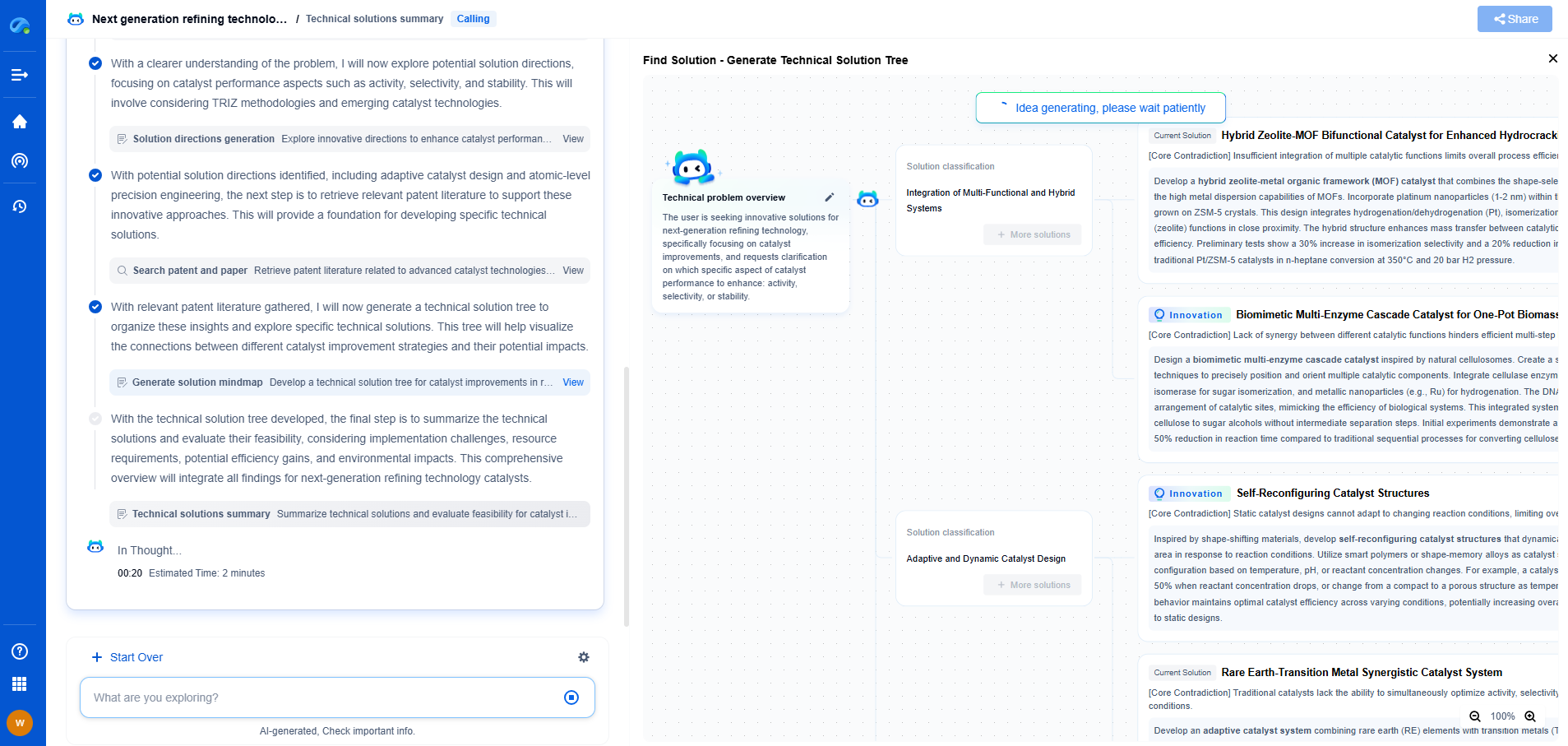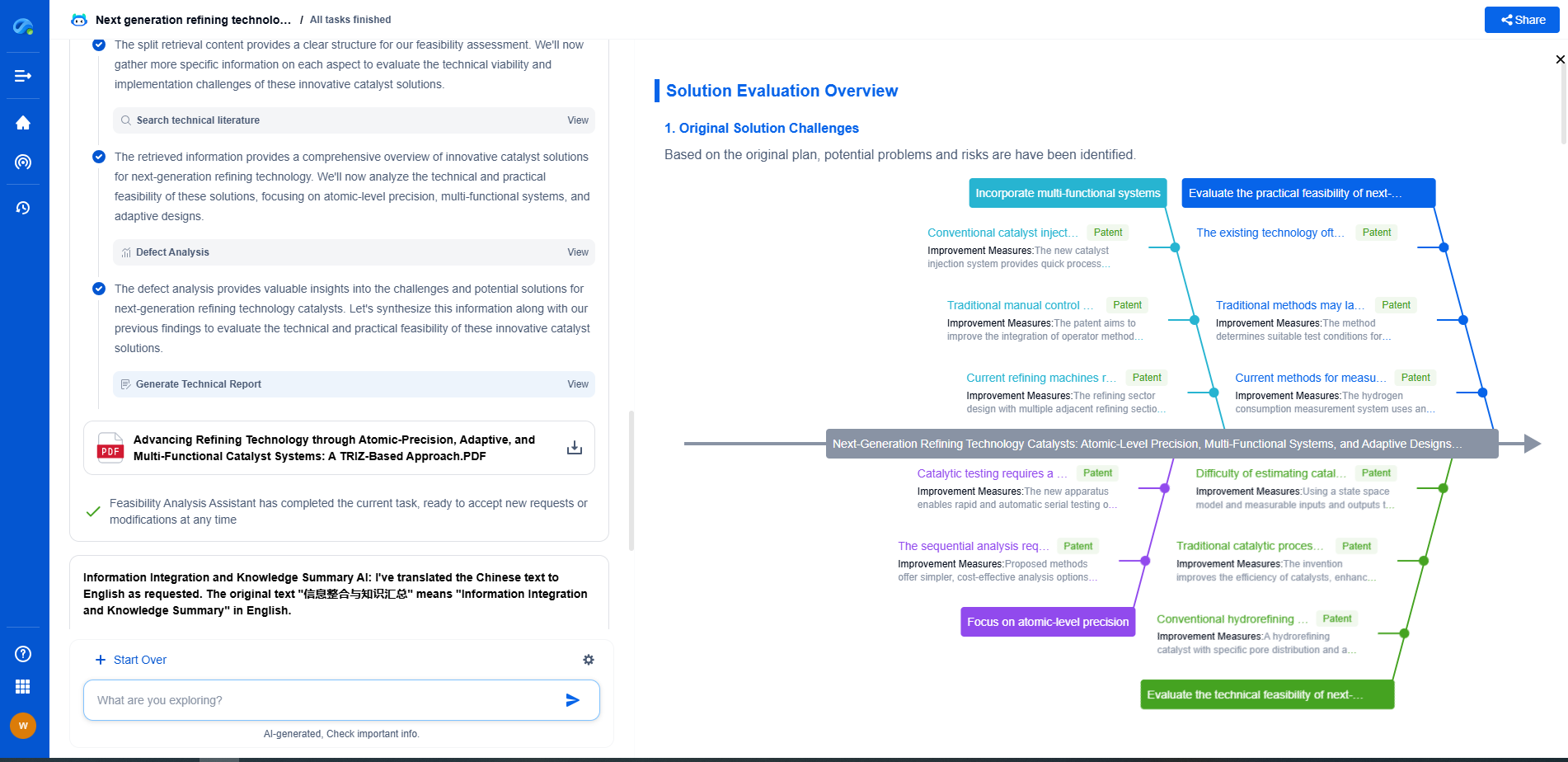Building an AI-Based Load Prediction Pipeline Using SCADA Data
JUN 26, 2025 |
In today's energy sector, the ability to accurately predict load demand is crucial for optimizing operational efficiency and reducing costs. SCADA (Supervisory Control and Data Acquisition) systems, which are already prevalent in the industry, offer a wealth of data that can be leveraged for this purpose. By integrating AI-based models, organizations can enhance the accuracy of load forecasts and make more informed decisions.
Understanding SCADA Data
SCADA systems are designed to monitor and control industrial processes. They collect real-time data from sensors and control systems across various points in an energy grid or plant. This data includes parameters like voltage, current, power consumption, temperature, and more. SCADA data is typically time-stamped and stored in databases, making it a valuable resource for predictive analytics.
Challenges in Load Prediction
Accurately predicting energy load is a complex task due to the dynamic nature of energy consumption patterns. Factors such as weather conditions, socio-economic activities, and unexpected outages can significantly impact load demand. Traditional statistical methods often fall short in capturing these complexities, highlighting the need for advanced techniques such as machine learning and AI.
Building the AI-Based Load Prediction Pipeline
1. Data Collection and Preprocessing
The first step in creating an AI-based load prediction pipeline is to collect historical SCADA data. It's essential to ensure data quality by cleaning and preprocessing the data to handle missing values, outliers, and other anomalies. This may involve normalizing the data or transforming it into a format suitable for machine learning algorithms.
2. Feature Engineering
Feature engineering is a critical step that involves selecting and creating new features that can improve the model's predictive power. Domain knowledge plays a vital role here, as experts can identify relevant variables that influence load patterns. Features could include historical load data, weather forecasts, calendar effects (e.g., holidays, weekends), and more.
3. Model Selection and Training
Choosing the right machine learning model is crucial for accurate load prediction. Commonly used models include regression algorithms, support vector machines, decision trees, and neural networks. Each model has its strengths and weaknesses, so it's important to experiment with several to determine which one best fits the data. Training involves using a portion of the data to teach the model to recognize patterns and relationships.
4. Model Evaluation
Once trained, the model's accuracy must be evaluated using metrics such as Mean Absolute Error (MAE), Root Mean Square Error (RMSE), or other relevant measures. Cross-validation techniques can provide insights into the model's robustness and generalizability across different data subsets. Fine-tuning the model’s hyperparameters might be necessary to achieve optimal performance.
5. Deployment and Monitoring
After achieving satisfactory results, the model can be deployed in a production environment. This involves integrating the trained model into the existing SCADA system to provide real-time load predictions. Continuous monitoring is essential to ensure the model remains accurate over time, as energy consumption patterns may evolve. Retraining the model periodically with new data can help maintain its efficacy.
Benefits of AI-Based Load Prediction
Implementing an AI-based load prediction pipeline offers several advantages. It enhances the precision of load forecasts, enabling more efficient energy resource allocation and grid management. This leads to cost savings, reduced energy waste, and improved reliability of power supply. Furthermore, it provides strategic insights that can drive operational improvements and support long-term planning.
Conclusion
Incorporating AI into load prediction using SCADA data represents a significant advancement in the energy sector. As the demand for reliable and sustainable energy continues to grow, leveraging AI technology will be instrumental in meeting these challenges. By building robust AI-based pipelines, organizations can unlock the full potential of their SCADA data, paving the way for smarter, more efficient energy management.
Stay Ahead in Power Systems Innovation
From intelligent microgrids and energy storage integration to dynamic load balancing and DC-DC converter optimization, the power supply systems domain is rapidly evolving to meet the demands of electrification, decarbonization, and energy resilience.
In such a high-stakes environment, how can your R&D and patent strategy keep up?
Patsnap Eureka, our intelligent AI assistant built for R&D professionals in high-tech sectors, empowers you with real-time expert-level analysis, technology roadmap exploration, and strategic mapping of core patents—all within a seamless, user-friendly interface.
👉 Experience how Patsnap Eureka can supercharge your workflow in power systems R&D and IP analysis. Request a live demo or start your trial today.
- R&D
- Intellectual Property
- Life Sciences
- Materials
- Tech Scout
- Unparalleled Data Quality
- Higher Quality Content
- 60% Fewer Hallucinations
Browse by: Latest US Patents, China's latest patents, Technical Efficacy Thesaurus, Application Domain, Technology Topic, Popular Technical Reports.
© 2025 PatSnap. All rights reserved.Legal|Privacy policy|Modern Slavery Act Transparency Statement|Sitemap|About US| Contact US: help@patsnap.com

